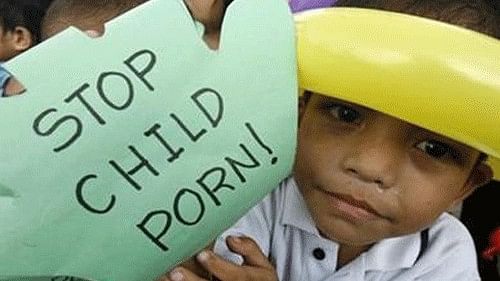
The judgement is important not only for the new definitions and interpretations but also for raising the bar on child pornography and proposing stricter procedures and mechanisms for dealing with it.
Credit: Reuters File Photo
The Supreme Court has widened the scope of the Protection of Children from Sexual Offences (POCSO) Act by making even viewing, possessing, and not reporting child sexual abuse-related content in one’s possession punishable under the Act, whether to not the content is shared or transmitted further.
The court did this while striking down a Madras High Court judgement which quashed criminal proceedings against a 28-year-old man who had downloaded two pornographic videos involving children on his phone. The court expanded the interpretation of Section 15 of the POCSO Act and linked it more closely to the overall aim of the law.
Originally, the provision was limited to storage of child pornographic material “for commercial purposes”. It was latter extended to include failure to report, intention to share it, etc. The court has now widened the meaning of “possession’’ to “the power to control the material in question and the knowledge of exercise of such control”.
The judgement is important not only for the new definitions and interpretations but also for raising the bar on child pornography and proposing stricter procedures and mechanisms for dealing with it. It has called for strengthening the technological and institutional measures, as recommended by a Rajya Sabha committee, and underlined the need for their strict implementation.
The court observed that the law in many cases punishes “overt steps” taken towards committing a crime and not “the mere thought of committing an offence”. It held that a failure to “delete or destroy or report” child pornography would allow the court to “indirectly” infer that the concerned individual intended to share or distribute it under Section 15(1).
The court has also cautioned courts against narrow interpretation of provisions of law that lose sight of the overall intent of the legislation. It has noted that the comprehensive provisions in the (Information Technology) Act which should be useful in dealing with cybercrimes against children.
It has also suggested that offensive content be described as ‘Child Sexual Exploitative and Abuse Materials’ (CSEAM), and not as ‘child pornography’.
The court has also told platforms and intermediaries to exercise greater vigil over such content and report it to the police when required. It has also told the government to implement comprehensive sex education programmes.
Complaints of sexual harassment and abuse of children have increased over the years. Many cases are not reported, too. Such harassment leaves children psychologically scarred for life. Their studies and relationships and even the personality is affected.
The Supreme Court’s intervention should goad parents, educators and law enforcement agencies to take action when cases come to light. Protecting every child from sexual abuse is the responsibility of society and State.